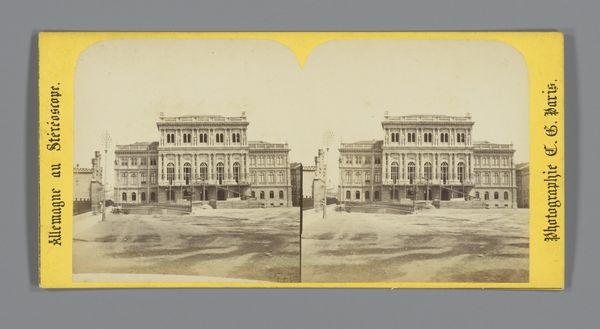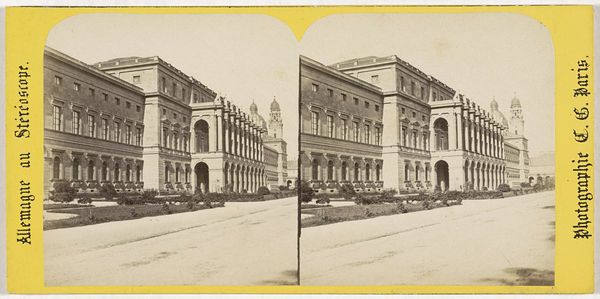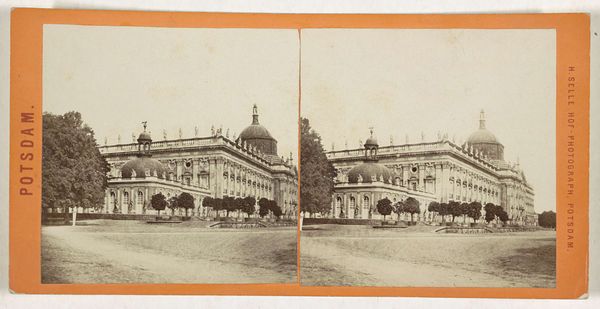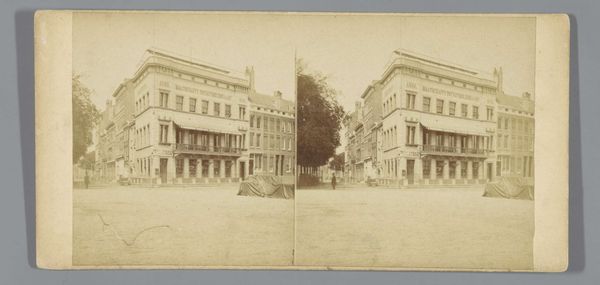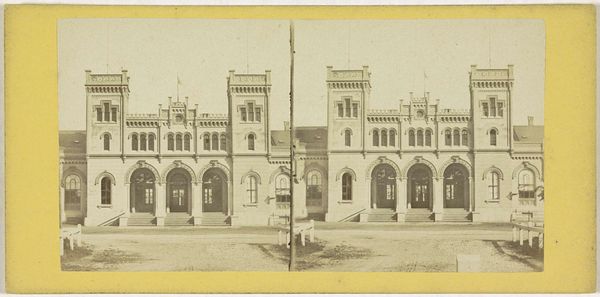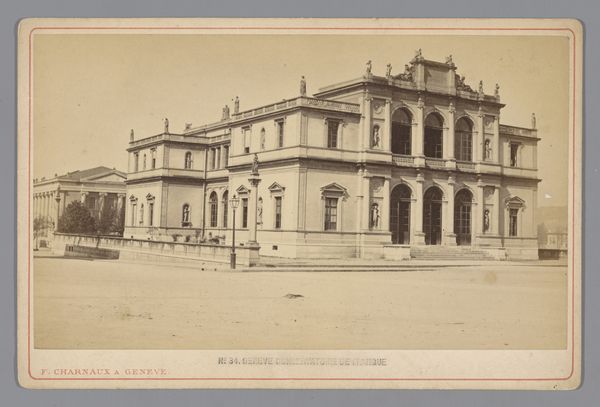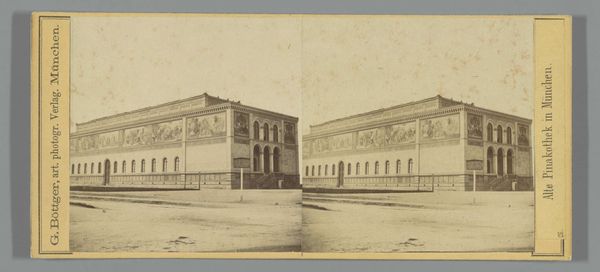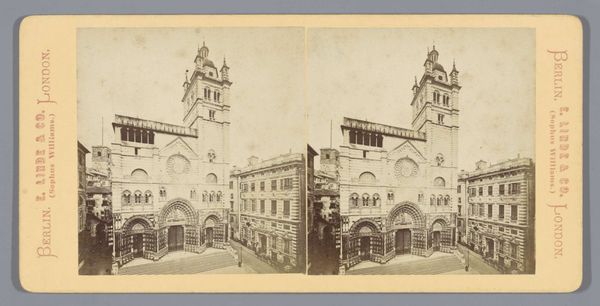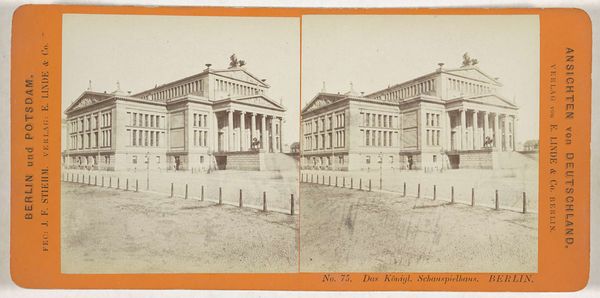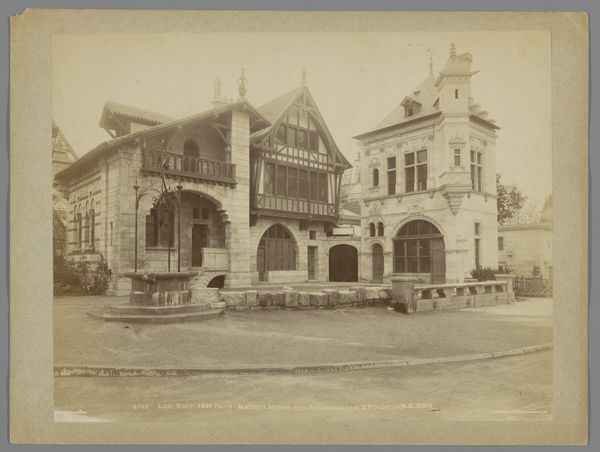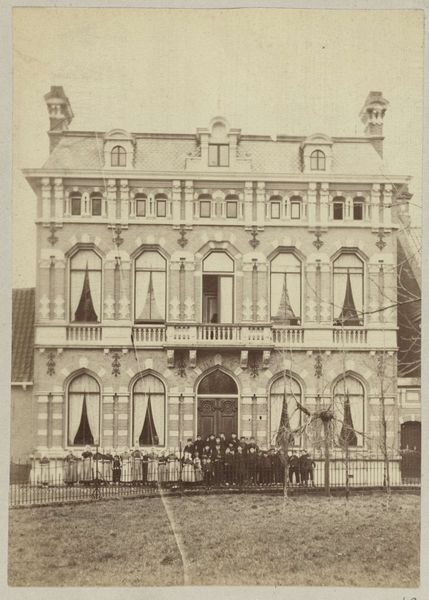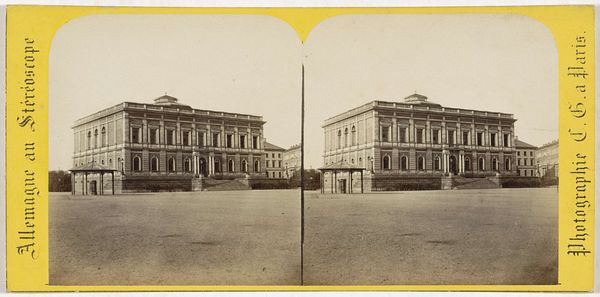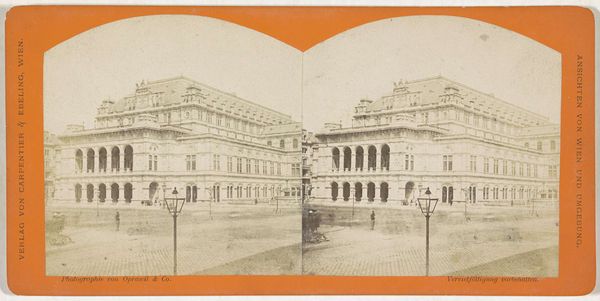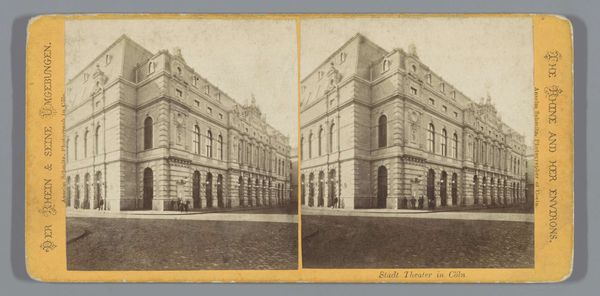
#
aged paper
#
toned paper
#
pencil sketch
#
old engraving style
#
coloured pencil
#
coffee painting
#
square
#
watercolour illustration
#
golden font
#
pencil art
#
watercolor
Dimensions: height 86 mm, width 177 mm
Copyright: Rijks Museum: Open Domain
Editor: This photograph by Hippolyte Jouvin, taken sometime between 1860 and 1865, depicts the Theater in Baden-Baden, Germany. It's a stereo card, so you get two almost identical images side-by-side. It's a little faded and sepia-toned, giving it this real sense of history, and you almost hear echoes from its past. How do we interpret the cultural meaning behind such a structured and public edifice? Curator: The rigidity in the photograph of the Baden-Baden theater underscores the values embedded in European society at the time: class, status, and power. A grand building such as this wasn't just about artistic expression; it served as a physical declaration of cultural capital, shaping and reflecting societal norms. How do you think the photograph, and indeed the very existence of such theaters, affected the identity and participation of different social groups? Editor: That's interesting. So it’s less about the plays themselves and more about the act of attending? Did the theater space serve a role of excluding specific social identities? Curator: Exactly. These cultural spaces often operate under a guise of shared public space but end up subtly dictating and policing cultural norms. And consider Jouvin himself. What social position did he occupy that afforded him the opportunity to create and sell stereo cards like this one? Who was buying them, and what did this consumption signify? It's a web of social interactions we need to unravel. What are your thoughts? Editor: I never considered that the people enjoying the play inside the building also enjoyed buying or seeing photos such as this. It points to privilege to even visit this place, but buying this also solidifies that privilege as well. Thank you! This changed how I understand such works, thinking about class and privilege at all times. Curator: Exactly! We need to keep asking who benefits and whose stories are silenced. Remember to view historical art and photography in intersectional lenses.
Comments
No comments
Be the first to comment and join the conversation on the ultimate creative platform.
